Teaching English-Language Learners
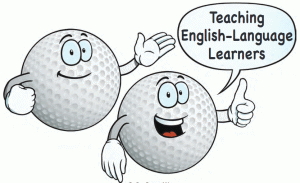
It’s been a rough year for Puerto Rico. Two major hurricanes this summer – first Irma in early September, then Maria a few weeks later – devastated the people and infrastructure of the 50-mile wide U.S. commonwealth. Progress to restore the island’s electrical grid has been slow. Six weeks after the storms, as much as 95 percent of Puerto Rico’s 3.5 million residents remained without electricity.
With fears that the recovery will stretch into months and even years, many Puerto Ricans have decided to leave the island. Every day, dozens of airplanes leave San Juan filled with Puerto Ricans who may never return. More than 80 percent of those airplanes are headed to Florida, where the governor has declared a state of emergency in order to free up money to help those fleeing the island to relocate.
More than 100,000 Puerto Ricans have already moved to the mainland. As a golf coach and instructor living and working in Florida, I consider it important how best to serve this large population of new potential clients. Only 20 percent of Puerto Ricans speak English fluently. For me, it’s been fairly commonplace to conduct a group lesson or summer camp session where one or more students are English-language learners (ELL). Using the following strategies can help make the experience a mutual learning opportunity:
Use non-verbal cues
Although you might not speak the same language as your student, there are some fairly universal non-verbal cues that you can use to communicate. Hand gestures, proximity and the tone of your voice can convey a great deal of information. Using images or drawings might also be useful when trying to deliver instruction. I use a laminated Rolodex-style pocket-sized photo guide, and I have found this to be immensely helpful.
Rate of speech and wait time
ELL students in the process of learning English have the challenge of listening to what you are saying, and then interpreting as best they can back to their native language. It can be difficult to listen and process at the same time. It is often useful, as he instructor in this situation, to be aware of how quickly you are speaking. It isn’t necessary to slow down to a snail’s pace – this could be perceived as condescending – but being aware of your rate of speech is important. Additionally, you will want to provide a beat or two more of wait time between questions and responses to allow your students to go through their process.
Model exercises and drills
This should be a pretty simple one for golf instruction. A good golf teacher should already model a new skill or drill so their students can see how it should be done correctly. In modeling a drill or exercise with ELLs, be sure not to simply stand and lecture. A lengthy verbal explanation is likely to not be well understood. Conversely, break up the drills into smaller steps with short explanations to allow your student to keep pace.
Check for understanding
In a lesson where there is no language barrier, checking for understanding is already an important teaching skill, but it becomes vital with ELL students. It’s an excellent idea to implement a non-verbal cue system to check for understanding. For example, implement a thumbs-up, thumbs-down arrangement or some other method. Remember that head nods tend not to work well, since many ELLs, when asked, “Do you understand?”, will nod their heads “yes” as a way of being polite.
Develop your own golf/Spanish vocabulary
You may not have the time or predilection to learn an entire language, but perhaps you could make the time to learn at least the vocabulary that pertains to golf. In Spanish, the word “golf” itself is already a cognate (meaning it is the same in English and Spanish), so that one’s easy! El palo de golf, la pelota de golf and el campo de golf shouldn’t be too hard to memorize (golf club, ball and course, respectively). Having your own arsenal of golf terms can help you form the basis of communication with your student, and they will appreciate the effort.


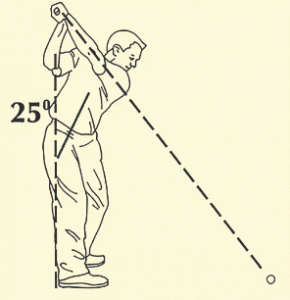 One swing required with 25 Degree Golf!
One swing required with 25 Degree Golf!
 By Mark Harman USGTF Course Director, Ridgeland, South Carolina
By Mark Harman USGTF Course Director, Ridgeland, South Carolina
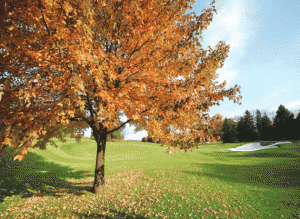 Over the years, as in all walks of life, a wonderful cast of characters has inhabited the USGTF, from both the examining side and the candidate side. These people make indelible impressions on all of us with their uniqueness which makes the fabric of our lives all the more colorful.
Over the years, as in all walks of life, a wonderful cast of characters has inhabited the USGTF, from both the examining side and the candidate side. These people make indelible impressions on all of us with their uniqueness which makes the fabric of our lives all the more colorful.
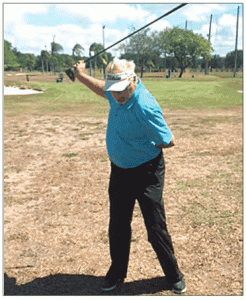
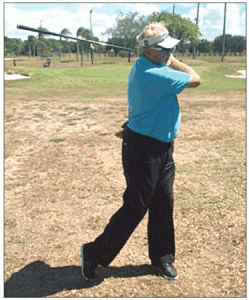
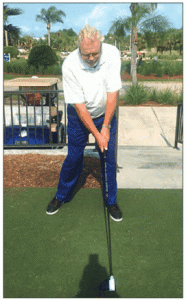
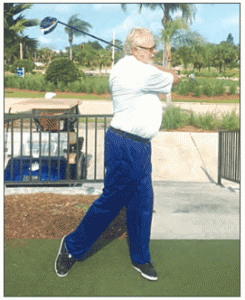
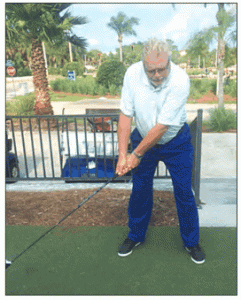 #2 Follow-through drill. As a practice swing, take the club about one-third of the way back. Take a little pause, then bring the club slowly into the impact zone, watching the club square up at impact, but now it is important to go through to a full-balanced finish position: belt buckle facing the target, left foot planted, right shoulder closest to the target, club behind the back with the arms folded in a classic follow-through position. I have found in my own swing, throughout the years, that if I could finish in a good position, the shot would be pretty good. Balance is everything in a golf swing, or in any other sport.
#2 Follow-through drill. As a practice swing, take the club about one-third of the way back. Take a little pause, then bring the club slowly into the impact zone, watching the club square up at impact, but now it is important to go through to a full-balanced finish position: belt buckle facing the target, left foot planted, right shoulder closest to the target, club behind the back with the arms folded in a classic follow-through position. I have found in my own swing, throughout the years, that if I could finish in a good position, the shot would be pretty good. Balance is everything in a golf swing, or in any other sport.